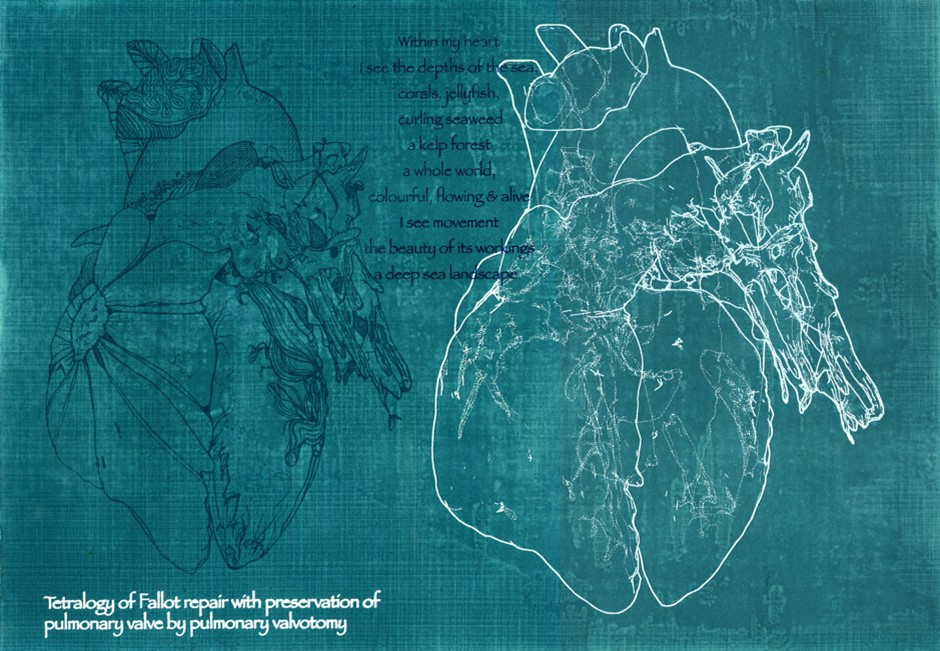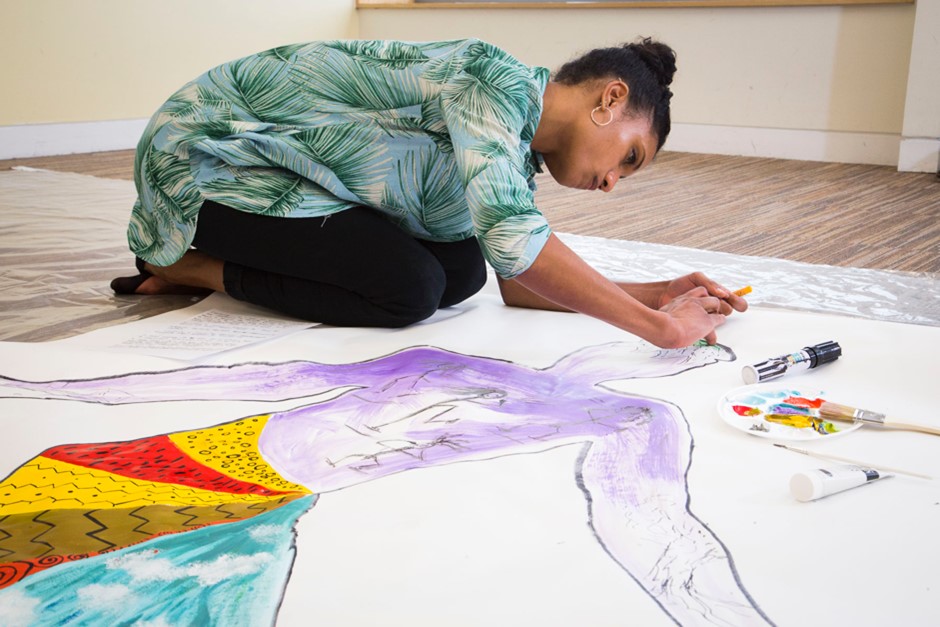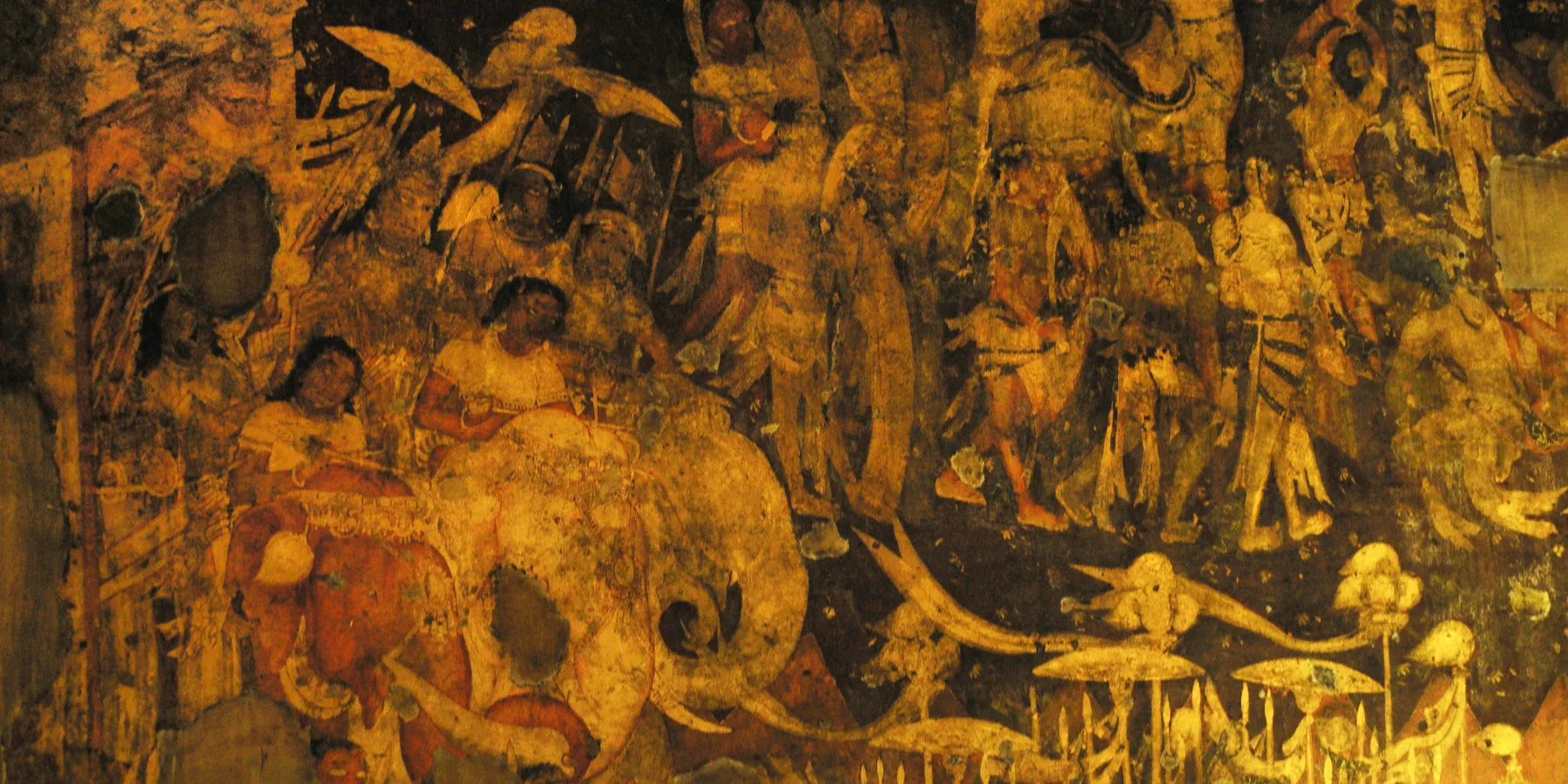Abstract
This article explores the implications of risk in arts-and-health collaborations that represent illness narratives for the purpose of engaging the public. Based on an artist’s, bioengineer’s, and health psychologist’s reflections from pediatric and adult group workshop practice settings, this article canvasses 8 dimensions of risk that deserve ethical attention.
Collaborative Arts-and-Health Projects
Art in its myriad forms has the potential to bring a different perspective and language to the illness experience. Drawing on Virginia Woolf’s meditation “On Being Ill,” Rebecca Solnit reflects on her own experience of illness: “When you are well, your own body is a sealed country into which you need not explore far, but when you are unwell, there is no denying that you are made up of organs and fluids and chemistry and that the mechanisms by which your body operates are not invincible.”1 Artists, writers, and philosophers not only can draw on their creativity to articulate their own reflections on disease but also enable patients to articulate their particular experiences of disease.2,3,4 These articulations often occur in a sensitive and vulnerable space—an interface between the “personal” and the “medical”—that can present risks and ethical issues requiring careful navigation.
From a theoretical standpoint, one model linking the arts with health has highlighted how different components of the artistic experience (eg, evoking emotions, stimulating the imagination, social interaction) can lead to psychological, physiological, behavioral, and social responses that are in turn linked to promotion of health and better prevention, management, or even treatment of disease.4 To realize these benefits, artistic work requires careful attention to different relationships. Interdisciplinary collaborations can underpin new forms of problem solving and person-centered research and thereby an epistemological shift in arts-based research and arts-based interdisciplinary collaborations.5 There is a growing evidence base of arts-based research and arts practices in a medical context.6 As discussed elsewhere by 3 of the authors and colleagues,7 this work must consider several important elements, including: (1) the health care setting itself, (2) aspects of production management, (3) relations with cultural venues (when work is presented publicly) and (4) the public (patients in a health care context as well as public audiences). The authors view participatory arts-based research and arts practices in a medical context as a profoundly collaborative process, with participants at the core held together by a multidisciplinary team.7
Risk in Arts-and-Health Projects
The experiences of the authors in arts-based collaborations, particularly with regard to re-presentation of narratives of cardiovascular health and disease,8,9,10,11,12 has led them to think carefully about the possible dimensions of risk and their associated ethical issues in collaborative, interdisciplinary, creative, and participant-centered work. These reflections take into account settings of engagement and art making (eg, hospital or arts studio workshop, one-on-one patient interactions), participants (eg, adult or pediatric patients with acquired or congenital heart disease, women with Takotsubo cardiomyopathy or “broken heart syndrome,” heart transplant patients), and different venues for public sharing (eg, installation in hospital settings, contribution to an externally curated group exhibition). Regardless of the specific setting or participants involved, we have highlighted 8 important considerations regarding sources of risk, their associated ethical issues, and mitigating factors, summarized in the Table.
| Dimension of Risk | Ethical Issues | Mitigating Factors |
|---|---|---|
| Using/presenting medical dataa |
• In rare cases, even appropriately anonymized data might be identifiable and have psychological implications for participants. | • Multidisciplinary team present to frame data appropriately, explain how imagery or 3D models are derived, and answer participants’ questions. • Artist is mindful of symbolic and medical significance of imagery and models and of their value as a representation of someone’s illness narrative. |
| One-on-one interactions |
• For participants, exploring concepts can be emotionally challenging. • For the artist, lacking resources or stories on which to base the creation of artworks can risk “mining” patients for their narratives. |
• Artist explores emotionally challenging concepts via creative activities that might generate metaphorical descriptions. • Patients build trust with the artist while also trusting the complexity of the creative ideas that they are exploring. |
| Workshop methodologies |
• The workshop should be accessible and not too strenuous or emotionally challenging for vulnerable patients. | • The artist should adapt the workshop methodology to accommodate participants’ needs (eg, physical disability) • Psychologist or nurse, if appropriate, should be present. |
| Consenting | • Obtain informed consent from participants, including artists, prior to taking part in the work. | • Individual is told about the purpose, benefits, and potential risks of participation,13 including how the workshop’s content may be documented, interpreted, processed, and used by the artist and the team, and is given ample opportunity to discuss and ask questions. |
| Identifying suitable participants |
• Gauge individuals’ emotional state and provide support. | •Ensure that the artist is aware of participants who may find the process challenging. • Ensure that suitable alternatives and signposting are in place. |
| Workshop environment |
• Provide a safe environment that supports participants’—including the artist’s— emotional and psychological needs. | • Provide clear communication not only during the workshop, but also before (workshop preparation) and afterwards (debriefing and reflection). • Facilitate open communication within the team, especially when dealing with challenging themes or potentially upsetting events (eg, death of a participant). |
| Appropriation | • Artist should reimagine and sensitively re-present someone’s imagery or idea, without appropriation. | • Share and reexamine the narrative with participants to ensure that the artwork and subsequent exhibition reflect the individual and collective voices of those who shared their stories. • Make explicit from outset the authorship of the artworks developed through the workshop process and subsequent art making. |
| Public presentation |
• Creating an artwork or a series of installations may trigger uncomfortable personal narratives. • Find a balance between artistic integrity and ethical appropriateness. |
• Carefully consider the presentation of the artwork and the setting and how they may be interpreted. |
|
aIncludes magnetic resonance imaging (MRI) and MRI-derived 3D printed anatomical models.
|
||
Arts-and-health participatory work culminating in artistic re-presentations of illness narratives can provide new understanding and perspectives on illness, but it can also pose ethical dilemmas of working in partnership with patients, using patients’ medical data or creative outputs in the art-making process (see Figure 1), or sharing artistic re-presentations with different audiences.
Figure 1. Blueprint, 2018, by Sofie Layton

Reproduced with permission of GOSH Arts from Layton S, Biglino G.14 © 2018 Sophie Layton. Photographer: Stephen King. The patient whose narrative this artwork depicts agreed that her image could appear in the exhibition setting and the exhibition catalogue.
Media
Screen print on fabric, 50 cm x 70 cm.
Arts-and-health participatory work is inherently multidisciplinary, and thus many of the identified risks can—at least in part—be mitigated by having a suitable team in place, supporting team members, ensuring regular and clear communication within the team, and—importantly— building trust with and meeting the needs of those taking part in the process. Unanticipated (and unintended) risks can be mitigated by comprehensive planning and preparation and having an appropriate multidisciplinary team in place. For example, a trained nurse or psychologist (with some experience in participatory practices) can support the artist facilitator by identifying subtle signs of discomfort in participants and signposting resources or following up with them after the workshop, if appropriate.
Other identified risks can be preempted by implementing appropriate good practice. Establishing ground rules is very important to ensure a safe space and clarity about the potential outcomes of the work and why any form of documentation (eg, audio recording, photography) is used. Ground rules include what these forms of documentation will be used for, what will happen to any creative output, how anonymity will be protected, and appropriately consenting participants on arrival. Also important are rules about sharing information or images. Participants must understand the need for confidentiality within the group—that they are not allowed to share outside the group anything about those in the group. The artist must ensure not only that appropriate consent for use of images for research purposes was signed by the patient when the scan was acquired, but also that any identifiable information is erased from the metadata (ie, that the images are anonymized). Although the need for formal ethical approval for research activities is clear, similar approval for engagement activities is usually not required. However, independent review of the proposed processes for ensuring the safe use of patient data, such as by an external steering group that includes patient representatives, would provide important additional oversight.
Building Support for Arts-and-Health Projects
The director of a local hospital arts program, if there is one, may be a key partner in supporting the work and facilitating local relationships. Three of the authors and colleagues have also discussed elsewhere the roles of a relational producer, including facilitating institutional relationships in this context, but this role may depend on the scale and budget of the project.7 In other cases, the scientific or medical partner(s) in the collaboration may champion the work at an institutional level.
Other Contexts of Arts-and-Health Projects
These reflections stem from the authors’ own experiences in a high-income country, but it is worth mentioning that arts-based approaches have been deployed for the purpose of health promotion in other settings (eg, in response to HIV/AIDS in Sub-Saharan Africa).15 Given the benefits of these practices in low-and middle-income countries, consideration should also be given to the specific context, which would likely result in a more nuanced set of recommendations. In addition to risk and risk mitigation, other considerations would include access to health care and power dynamics, as well as identifying culturally accepted artistic and creative processes that do not require specialized equipment and materials. For example, a body mapping exercise using basic art materials might lead to the participant’s insightful and deep reflection on the body, which could be framed medically (see Figure 2).
Figure 2. Body Mapping Creative Activity in a Workshop Setting

Reproduced with permission of GOSH Arts from Layton S, Biglino G.14 © 2018 GOSH Arts. The pictured participant consented to being photographed.
Finally, the COVID-19 pandemic leads to specific considerations of conducting this kind of work online. In a virtual setting, nonverbal reassurance is very limited (if not entirely absent) and group interactions are also limited. Simple actions, such as an introductory phone call to a potential participant, allow the workshop facilitator to become more familiar with an individual’s narrative and to flag any accessibility needs. The authors acknowledge that the online workshop encounter merits its own discussion once more experience has been gathered in this setting.
References
-
Solnit R. The Faraway Nearby. Granta; 2013.
- Padfield D. Absence and presence: the potential for art to facilitate improved communication about pain. Lancet Haematol. 2020;7(2):e96-e97.
- Padfield D, Omand H, Semino E, Williams ACC, Zakrzewska JM. Images as catalysts for meaning-making in medical pain encounters: a multidisciplinary analysis. Med Humanit. 2018;44(2):74-81.
-
Fancourt D, Finn S. What Is the Evidence on the Role of the Arts in Improving Health and Well-Being? A Scoping Review. World Health Organization; 2019. Accessed May 19, 2022. https://apps.who.int/iris/bitstream/handle/10665/329834/9789289054553-eng.pdf
-
Herbert J. Creating the AHRC: An Arts and Humanities Research Council for the United Kingdom in the Twenty-First Century. British Academy; 2008.
-
All-Party Parliamentary Group on Arts, Health and Wellbeing. Creative Health: The Arts for Health and Wellbeing. 2nd ed. All-Party Parliamentary Groups; 2017. Accessed October 13, 2021. https://www.culturehealthandwellbeing.org.uk/appg-inquiry/Publications/Creative_Health_Inquiry_Report_2017_-_Second_Edition.pdf
- Ledgard A, Hall S, Layton S, et al. Defining the role of “relational producer” in arts-and-health collaborations in hospitals: a reflection on catalysts and partnerships. Leonardo. 2021;54(3):345-349.
- Layton S, Wray J, Leaver LK, et al. Exploring the uniqueness of congenital heart disease: an interdisciplinary conversation. J Appl Arts Health. 2016;7(1):77-91.
- Biglino G, Layton S, Lee M, Sophocleous F, Hall S, Wray J. “Making the Invisible Visible”: an audience response to an art installation representing the complexity of congenital heart disease and heart transplantation. Med Humanit. 2019;45(4):399-405.
- Biglino G, Layton S, Wray J. Beyond heart symbolism: artistic representation of narratives of congenital heart disease. JAMA. 2017;318(18):1740-1742.
-
Biglino G, Layton S, Leaver LK, Wray J. Fortune favours the brave: composite first-person narrative of adolescents with congenital heart disease. BMJ Paediatr Open. 2017;1(1):e000186.
- Biglino G, Layton S, Wray J. When we meet in a clearing: making research accessible to patients and patient experience accessible to clinicians. J Patient Exp. 2019;6(4):333-335.
-
Hoverd E, Staniszewska S, Dale J. The informed consent process in health research with under-served populations: a realist review protocol. Syst Rev. 2021;10(1):103.
-
Layton S, Biglino G. The Heart of the Matter Exhibition Catalogue. GOSH Arts; 2018.
-
Bunn C, Kalinga C, Mtema O, et al; Culture and Bodies' Team. Arts-based approaches to promoting health in sub-Saharan Africa: a scoping review. BMJ Glob Health. 2020;5:e001987.




